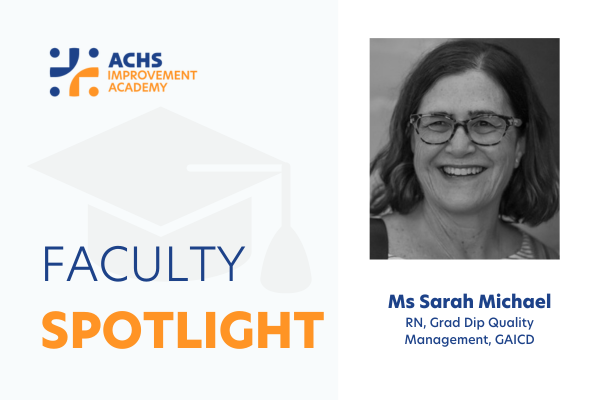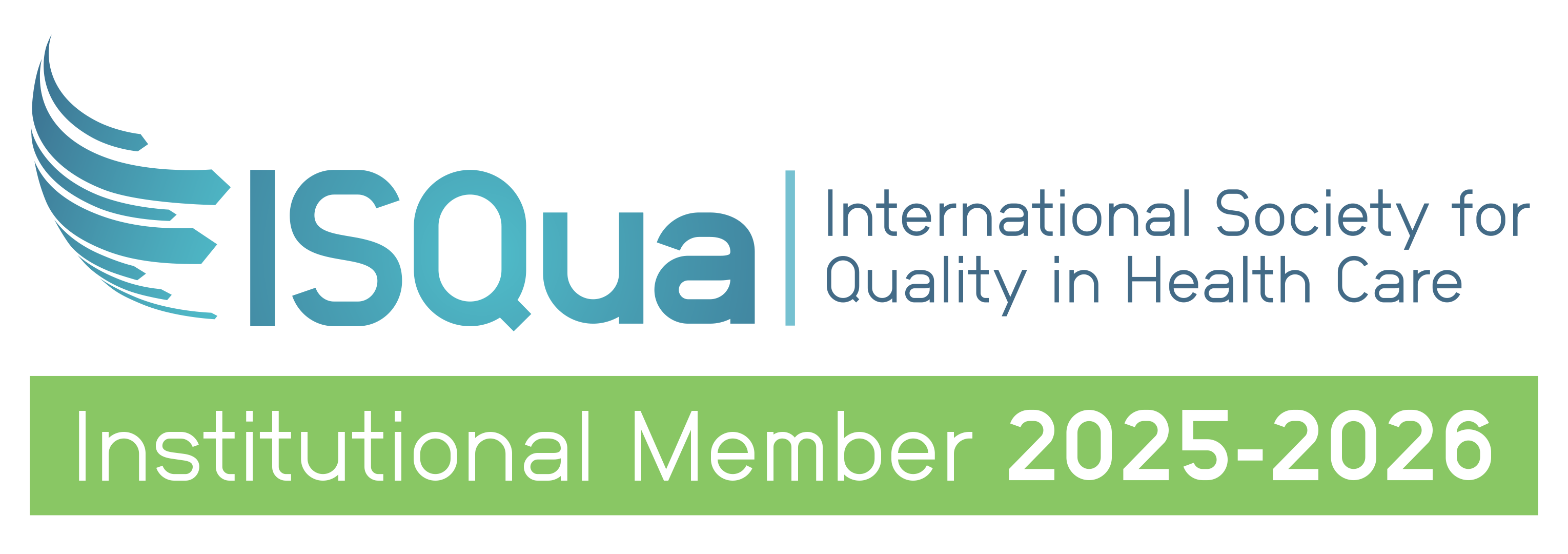.png?width=800&auto=format)
Insights from a Clinical Governance Expert on Quality and Safety
Welcome to the ACHS Improvement Academy Faculty Spotlight series, where we highlight the expertise and perspectives of esteemed colleagues on key topics in healthcare.
In this edition, we are excited to feature Ms Sarah Michael one of our facilitators for Root Cause Analysis and Open Disclosure training at the ACHS Improvement Academy.
With over 40 years’ experience in the health sector, Sarah’s professional pathway includes roles from being a registered nurse and manager in intensive care to quality, clinical governance, management roles at a hospital, health service, and state levels, culminating in the last thirteen years working at St Vincent’s Health Australia across acute, sub-acute, public, private and aged care sectors.
Reflecting on your career, what inspired your journey from nursing to clinical governance and quality roles?
I began my career as a registered nurse in an infectious diseases ward before completing intensive care training and working in a specialised cardiothoracic ICU. After five years in ICU, I began working in one of the first Quality Assurance Programs at Royal North Shore Hospital in Sydney, known as QARNS
During my time with QARNS, I was part of the team that worked on the Quality in Australian Health Care Study, published in 1995. This study remains one of the most cited articles in the Medical Journal of Australia on patient safety and preventable harm.
After QARNS, I transitioned to a Quality Manager role at a smaller district hospital. It was in this role that I discovered my passion for Quality Management and Patient Safety.
I subsequently worked in roles at the local district level, NSW Health, the Clinical Excellence Commission, and a six-year consulting period. For the past 13 years, I’ve served as the National Manager of Clinical Governance and Safety at St Vincent’s Health Australia.
You have worked across multiple sectors within St Vincent’s Health Australia (SVHA). How does your experience in diverse healthcare settings influence your approach to quality and safety?
St Vincent’s is Australia’s largest not-for-profit provider of health and aged care services, spanning public and private hospitals, residential aged care, community and virtual care, and outreach programs.
My role as Group Manager was to maintain focus on the bigger picture and ensure decisions considered their impact across all sectors. For example, developing the single incident management system for SVHA, meant meeting the diversity of state-based regulations and legislation, whilst accommodating for the nuances of variation in classifications across the public, private and aged care settings
At St Vincent’s, the organisation’s mission and values deeply influenced my work. Being guided by these principles made it natural to keep patients and residents at the heart of every decision, always asking, How will this impact the patient, resident, or client?
With your role in developing NSW Health’s inaugural Root Cause Analysis program, what are the key lessons you learned from implementing such a foundational program?
I learned that when you understand a systems approach to investigation, the specific tools you use matter less. What’s essential is following a structured process of asking "why" and avoiding premature conclusions or assumptions.
How have you seen patient safety and quality evolve since your early involvement?
My father used to always ask me, what is it I actually do. Explaining to a non-health professional that I worked to make the health system safer—when most assume it’s inherently safe—was challenging. I’d tell him it might take 10 years, but I was fortunate to contribute to generational change in Australia.
One of the biggest changes I've observed is a significant cultural shift. Thirty years ago, there was a strong culture of blame—focusing on identifying who was involved in an incident and what disciplinary action was taken. Today, there is a very strong understanding that we design the systems in which people work, and it is far more common to see where the system failed in not supporting the clinicians trying to complete their day-to-day tasks.
What aspects of incident management and patient experience do you think are essential for healthcare teams to prioritise?
Managers need to create the environment or culture within their teams to encourage staff to come forward and talk about their day. This may include a simple discussion on what went well today, what didn’t go so well, and what can we do differently tomorrow. If these discussions lead to discussions on actual or near miss incidents, this is the perfect opportunity to look at and prioritise the actions associated with these events.
The key priorities are to know what your risks in your own department are and ensure that these are visible to your staff and discussed at your team huddles / meetings. This should be triangulated with your patient experience feedback.
Thank you, Sarah, for sharing your insights and experience with us. You can learn more or register for our Root Cause Analysis and Open Disclosure training.

